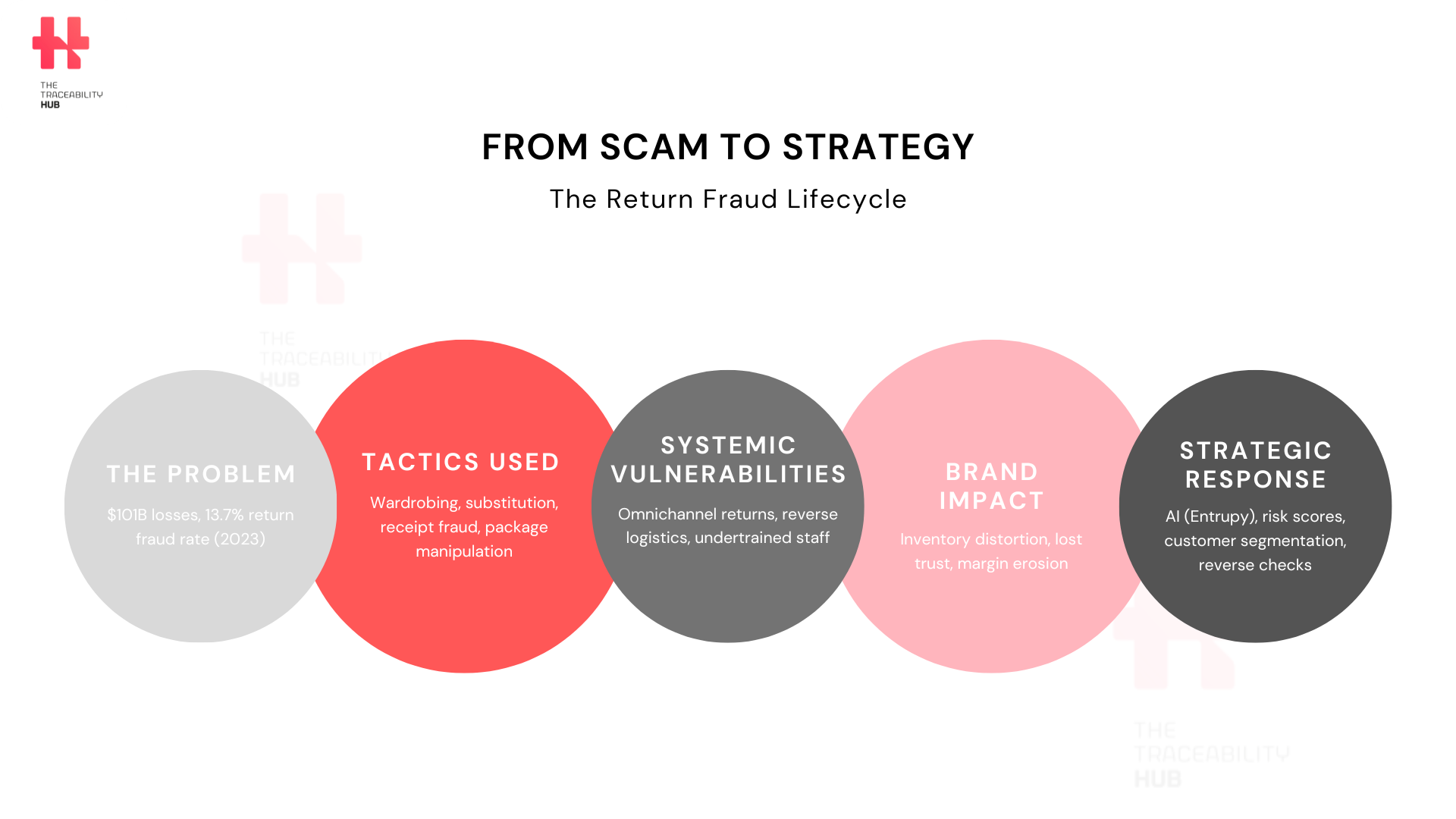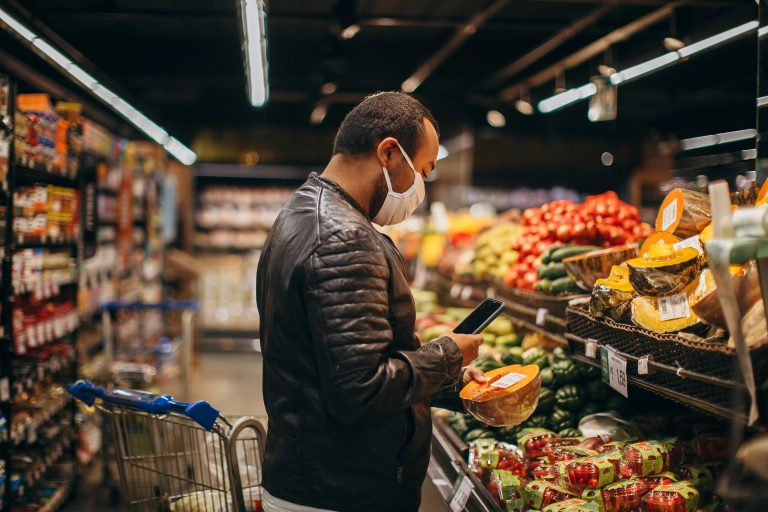Return Fraud: A Growing Threat in the Age of E-Commerce
The landscape of retail has changed dramatically and so has the nature of fraud. What used to be a minor concern is now a major financial and operational headache. Return fraud cost the global retail industry over $101 billion in 2023, making up nearly 14% of all returns, according to the National Retail Federation.
Luxury marketplaces are especially exposed. The allure of high-value items and accommodating return policies make them attractive targets for scammers. It’s not just fake receipts or the occasional wrong item being sent back, luxury fraudsters have become alarmingly clever. From returning near-perfect counterfeits to manipulating store return channels, these scams are quickly becoming one of the biggest threats luxury retailers face today.
How Return Fraud Works: Common Types of Return Fraud, Tactics and Trends
Return fraud occurs in many forms, each more inventive than the last. Signs of fraudulent product returns: some customers return items without receipts or forge documents to get around standard policies. Others practice return substitution, sending back a similar looking, but entirely different or fake item instead of the original.
Then there’s wardrobing fashion fraud – a trend where shoppers buy luxury clothes or accessories, use them once (often for social media or an event), and then return them as if unused. Some even exploit return systems by using fresh shipping labels to sneak back older purchases. What used to be rare is now part of a growing playbook used by fraudsters who are watching retailers closely for any weak spots.
Consumer Behaviour and the Normalization of “ Wardrobing Fashion Fraud”
Not all return fraud is carried out with obvious criminal intent. Sometimes, it’s just seen as a harmless habit. Take wardrobing fashion fraud for example – wearing a high-end item once and returning it. For some, it’s a way to keep up appearances without paying the full price.
A recent survey showed that 1 in 5 shoppers aged 25–34 admitted to doing this. And during the 2023 holiday season, a quarter of consumers bought items they never intended to keep. This kind of behaviour blurs the line between smart shopping and deceit. To change it, brands need to rethink how they communicate. Not just with warnings, but with messages that resonate. For younger buyers, that might mean emphasizing the environmental toll of return policy, for older ones, the financial impact.
Return Policy: The Reverse Logistics Blind Spot
From Scam to Strategy: The Return Fraud Lifecycle

While much attention is paid to getting products to customers quickly and efficiently, what happens when they come back is often overlooked. Reverse logistics – the process of handling returns can be disorganized and costly.
Luxury retailers are especially vulnerable here. Returned items often end up in long-term storage, sometimes never re-sold, quietly draining revenue. With so much focus on customer acquisition and sales analytics, many brands fail to account for what happens after the sale. It’s time to rethink the full lifecycle of a product. From purchase to return and close the loop with smarter back-end systems.
How Return Fraud Affects Luxury Brands: Risks and PR Sensitivity
Fighting fraud online shopping isn’t just about stopping bad behaviour, it’s about doing it without upsetting the good customers. That’s a tough balance. In 2019, ASOS came under fire for flagging “unusual return patterns” in customer accounts. What they thought was fraud prevention looked, to some, like unfair targeting.
Luxury brands walk a fine line here. They can’t afford to be passive, but they also can’t afford to alienate loyal shoppers. This makes transparency key. If customers understand why certain checks exist, and see that the rules are fair, they’re more likely to stay loyal even if those rules become stricter.
Luxury Return Abuse: Why Traditional Return Policies Fall Short
Retailers once saw flexible return policies as a competitive edge. Today, they’re often a liability. Scammers love lax policies, and cracking down too hard risks pushing away genuine customers. It’s a catch-22.
Still, there’s a way forward. Instead of using one-size-fits-all rules, retailers can take a more personalized approach, offering VIPs extra flexibility while putting safeguards in place for high-risk transactions. It’s not about being restrictive, it’s about being smart.
Human Oversight: A Failing First Line of Defence
Store associates and warehouse staff are the first people to deal with returns. But during busy seasons or flash sales, they’re usually under pressure to process product returns quickly. They hardly have time to investigate them deeply.
As a result, small signs of return fraud detection often slip by: a luxury sweater returned with a faint wine stain, a swapped handbag that looks nearly identical to the original. These subtle return scam add up. Brands need to invest in training and give teams the time, tools, and authority to do the job right.
Technology to the Rescue: Smart Verification Systems
Thankfully, help is on the way, thanks to technology. An example is using AI return fraud detection and high-resolution imaging. A return fraud detection systems create a kind of digital “fingerprint” for each item by capturing microscopic details like stitching, hardware, or embossed patterns. When a return comes in, the return fraud detection systems compare it to the original fingerprint. If it doesn’t match, it’s flagged for review.
Data-Driven Defences: Risk Scoring and Monitoring
Retailers are also getting savvier with data. Instead of treating every shopper the same, some companies are starting to assign “return risk” scores. Return fraud detection tools like Retail Equation help brands identify suspicious behaviour, such as frequent returns, odd purchase patterns, or returns that don’t match typical product lifecycles.
Amazon, Sephora, and others already use these insights to limit abuse of return policy fashion. By segmenting between loyal customers and potential scammers, retailers can protect their margins without punishing everyone.
Cross-Functional Strategy: Everyone Has a Role
Return fraud isn’t just a logistics issue. It’s a business-wide problem that demands a business-wide solution. Operations teams need to standardize inspections. Finance needs to track refund patterns. Customer service should flag odd complaints. IT must enable anti-fraud solutions, real-time tracking and alerts.
Even employee-related fraud, like processing fake returns for friends, can slip through unless every team is aligned. The solution is to make fraud prevention a shared responsibility.
How Luxury Brands Prevent Return Abuse: Strategic Priorities for the Future
To truly stay ahead of return fraud, retailers need to focus on three big areas:
- Return fraud detection tools – forecast fraud with data: Use data to identify potential issues before they happen, like spikes in high-ticket sales or rerouted deliveries.
- Abuse of return policy – create enforceable return policies: Clear, fair policies can deter fraud. Educate staff, verify buyer details, and avoid giving cash refunds without strong checks.
- Modernize the returns journey: Establish secure drop-off points, inspect returned items early, and work with local partners on international returns to avoid unnecessary shipping of fakes.
These strategies improve the customer experience by making returns smoother and more trustworthy for everyone.
Return Fraud Prevention: A New Era Demands New Defences
Return fraud is a core challenge for modern retail, especially in the luxury world. With fake goods getting harder to spot, and fraudulent tactics evolving fast, retailers must step up.
Solutions exist: from advanced tech and smarter policies to cross-team cooperation and customer education, the return fraud tools are already here. Brands that move quickly and thoughtfully will safeguard profits and earn the trust of shoppers in an increasingly sceptical market.
Read more: The Allure of Counterfeits: How Consumer Demand Is Reshaping the Luxury Market






